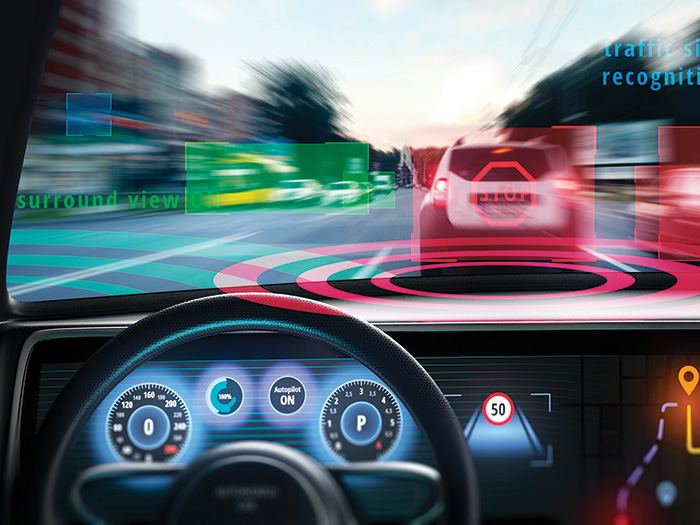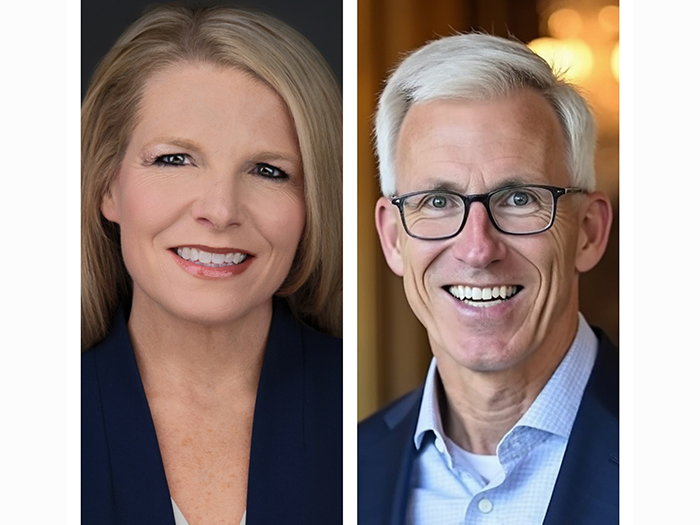Tackling Soaring Trucking Insurance? How Improved Recruitment, Operations and Telematics Can Help
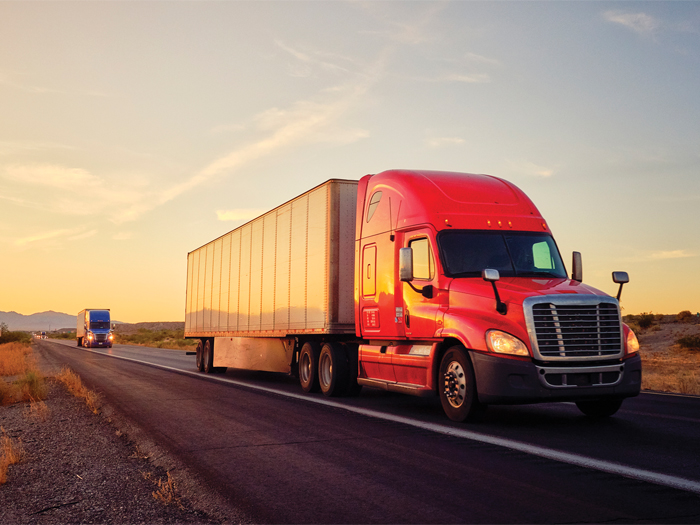
If you’re insuring a vehicle, you already know it’s bad: Premiums have been accelerating upward for years, and things show no sign of reversing course anytime soon.
“Almost every insurance carrier that operates in the commercial auto liability space has seen deteriorating results, so there’s been continual rate hikes to try and manage profitability,” said Greg Stefan, SVP, risk control, Arch Insurance Group.
Trucking fleets may be feeling it most, but every company that relies on vehicles — whether employer- or employee-owned — is seeing its premiums rise.
“Commercial auto has gone up, on average, 10% [a year] for the last seven or eight years,” said Rohan Malhotra, CEO and cofounder of Roadzen, an Insurtech specializing in auto lines. “This is massive for small and medium-sized companies, such as a trucking owner or a plumber who owns seven vehicles.”
Alongside rising premiums is a corresponding decline in capacity: “The capacity is really challenging, because previously, you could get a reinsurer to take $10 million or $15 million of a line,” said Lisa Paul, chief strategy officer for transportation at HUB International. “Nobody’s willing to take $15 million of a line anymore. There are reinsurers that are limiting their participation to a total of $10 million in a $200 million tower, and they want that $10 million in different layers … So the layering of these casualty towers is very difficult for large fleets.”
The result, Paul said, is that “the insurance marketplace has been under tremendous financial pressure, with poor-performing auto rates driven by a number of factors: the cost of parts, the complexity of how our vehicles are built today and how they have to be repaired combined with tort liability issues and nuclear verdict issues … and the connector to all of these sorts of things is technology.”
And as is so often the case with problems caused by technology, only technology can make it better.
Driving the Trend
What has driven the commercial auto insurance sector to its current state? In a word, claims. In two more words, frequency and costs.
Claim frequency began to climb dramatically in 2020. While auto fatalities do not represent the entire picture, they may serve as a proxy for the overall number of collisions taking place. After remaining stable at about 30,000 to 35,000 per year for over a decade, auto-related fatalities reached nearly 40,000 in 2021, representing a roughly 19% increase over 24 months, according to NHTSA data.
Some of the longer-term rise in premiums can be attributed to traffic volume: In 2023, there were 24% more drivers on the road than there were in 2003, and nearly 58% more than in 1983. (There’s also evidence that those drivers are getting worse). And while more drivers mean more premiums paid, that increase in volume may also be contributing to a higher rate of accidents per vehicle.
Just as significant are the costs of those claims. On the more benign side, there’s general inflation, which has driven up the cost of everything from cracked windshields to medical care for injured parties. According to the U.S. Bureau of Labor Statistics, vehicle repair costs surged 23% from January 2022 to January 2023.
“Garages and workshops are incredibly constrained for manpower and supply,” Malhotra said, “and that is one of the biggest contributors to auto insurance inflation.”

Greg Stefan, VP of risk control, Arch Insurance Group
Further, Stefan added, “if you rear-ended somebody 10 or 15 years ago, you paid for a bumper. You rear-end somebody now, you’re paying for a bumper, for every sensor, every camera. Everything is more expensive.” The vehicles themselves have become much more complex and difficult to repair.
On the more pernicious side, commercial auto lines have proven particularly susceptible to legal system abuse, especially cases of negligence in at-fault accidents causing injury. While limited to the extreme end of the claims spectrum, these outsize nuclear awards — awards of $10 million or more — are weighty enough to throw off the center of gravity for the entire sector.
“Nuclear verdicts are frankly what’s waking a lot of people up” to the strain on commercial auto, Stefan said, “because they mean you can go out of business. There may not be enough insurance available to cover the damages.”
Anecdotally, legal system abuse has been an issue for auto insurers for years; in July, a Rand social inflation report provided some hard data to back up those suspicions. Among its findings: From 2017 to 2019, “awards for commercial trucking … grew at nearly a 20% annual rate relative to a 2010-2017 baseline period” — well ahead of all the other categories surveyed — and “social inflation potentially caused commercial auto liability claim payments to be roughly 14% (or $20 billion) higher between 2010 and 2019 than they would have been otherwise.”
What typically characterizes these nuclear verdicts is the perception of negligence.
“Sometimes, you can’t prevent an accident,” Stefan said, “but when negligence is shown — negligence in hiring, negligence in retaining a driver, negligence in taking corrective action, negligence in not screening their motor vehicle record — that is where you may see punitive damages.”
Added Brian Jungeberg, vice president of the national transportation practice at Risk Strategies, “I would venture to say that legal system abuse, especially in certain venues, is adding 150 to 250% to awards.”
It’s a legal environment that’s prompting many insurers to settle if it will avoid even a small chance that a claim will go nuclear at trial — including cases where nobody believes the defendant is to blame.
“The idea of having to prove fault has been reduced,” said Donnacha Smyth, chief underwriting officer for casualty, AXA XL. “You’ve just got to prove that something happened, not necessarily a fault, and the jury is going to feel that they need to award [whomever] they perceive the victim to be.”
Dire as this situation sounds, it’s not hopeless. In fact, the experts we spoke to identified three main arenas of risk control in fleet management, ranging from totally low-tech to cutting-edge.
Talent Search
For one, the trucking industry has been affected by the same talent shortage as everyone else — perhaps more so, as young people are proving leery of trucking due to its demanding hours and the possibility of technological disruption.

Brian Jungeberg, VP, national transportation practice, Risk Strategies
Meanwhile, especially post-pandemic, “e-commerce has generated far more demand for the driving role, and there’s not enough talent there to fill it on a consistent basis,” Jungeberg said. And while long-haul trucking is seen as a career, rideshare driving and food delivery tend to attract more people who view the job as a sideline, rather than a vocation.
“You have this vicious cycle of non-professional drivers, and that’s exacerbating the losses and claims both in frequency and in severity,” Jungeberg said. “Plaintiffs’ counsels are very quick to pick up on things like ‘This driver worked at four other places and he was there for a month each time, and then he showed up at your doorstep, but you hired him right away and didn’t do any sort of safety training’ … It speaks to folks not having a culture of safety and professionalism if they’re churning through drivers.”
But while driver screening and training may be taking a back seat, they’re both straightforward ways to reduce accidents and avoid the appearance of negligence.
“Why are you only running a motor vehicle record once a year?” Stefan said. “You run an initial MVR in January, then a driver might have a DUI in March, and you don’t check them again until January. Why don’t we get proactive and use technology to continuously monitor motor vehicle records? … I can implement available technology and get an activity notification as soon as negative activity hits the Department of Motor Vehicles or the court system.”
Order of Operations
Easy-to-implement technologies can improve not only driver screening but also the old-school activities surrounding onboarding, training and certification, and performance feedback — all things a fleet manager can submit to underwriters to demonstrate that they take safety seriously.
HUB International, for one, offers a platform called HUB Drive Online, which operates independently from its brokerage arm and is designed to manage many of the administrative tasks involved in fleet management.
For their part, underwriters have data that could prove useful to insureds’ operations: Fleet managers can use claims information about when and where accidents occur to schedule drivers for different routes or times, avoiding the most dangerous stretches of a journey.
“If you’re starting to analyze the number of losses on a certain road from point A to point B, a deathtrap freeway area that’s poor, you can begin feeding that information back into route planning,” Paul explained, which helps not only fleet operators but their underwriters, too.
And while underwriters can provide fleets with more granular risk data, fleets can provide underwriters with more granular data about their movements.
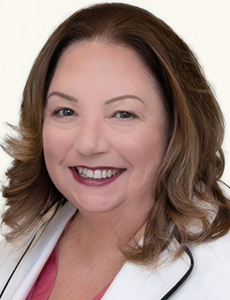
Lisa Paul, chief strategy officer for transportation, HUB International
“Ten years ago, the best way to get true exposure information was transportation sales or miles, and even getting the miles often wasn’t an easy piece,” Paul said.
“From the insurance company perspective, it was about how many power units [a client had] and the location where they’re generally driven. There was really no verification of that. You could say ‘I have 100 power units in upstate New Jersey,’ but in reality, those are driven on a daily basis in the heart of downtown New York … So there was a foggy lens to real exposure, and as a result of that, it was difficult, as an underwriter, to really analyze the risk properly.
“Fleet owners want a fair shake; they want to pay based on their true exposure,” Paul continued. “The old-fashioned insurance application as we knew it — give me your units, tell me where you drive, give me your drivers list so I can run the MVRs, and by the way, give me your loss runs — isn’t exactly cutting the mustard for the insurance industry to define their underwriting practice and be able to make money. They have to be able to parse their rates based on which fleet has newer equipment, better drivers, better training, a better onboarding process, and maybe even fewer miles than the other one.”
While gathering this volume of data was impossible in the past, “it’s not aspirational anymore,” Paul said. “The technology is here. Insurance companies are clamoring to figure it out.”
Jungeberg agreed: “I often think that insurers aren’t asking enough questions and looking at the right things. Just raising rates can’t continue to happen. We’ve been trying to make that answer work for 12 years, and clearly it hasn’t.”
Still, raw data doesn’t immediately resolve into an accurate reflection of risk exposure on its own. “It’s hard to quantify safety culture,” Jungeberg said. “Do you use a point system? How do you get that into [something insurers] can hand to an actuary so it’s not just someone licking their finger and sticking it in the air to see which way the breeze is blowing and making a judgment? That’s the struggle.”
Real-time oversight of drivers’ qualifications and precise data on vehicles’ movements can create a fuller picture of risk, but one important piece remains: what goes on behind the wheel.
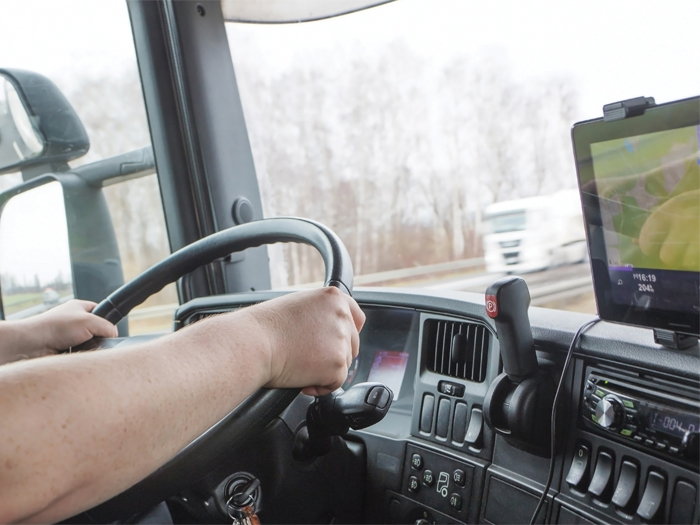
Telematics holds enormous promise in improving driver safety and combating spurious claims of negligence.
Telematics for the People
While sensors and automation can increase repair costs, there is more automakers could do to make these repairs cheaper — installing modular rather than integrated sensors, for example, so that individual parts could be swapped out and replaced or reused, rather than scrapping entire complex systems.
But even factoring in the higher cost of repair, driver-assisting technologies can represent a net gain if they prevent costly accidents.
“The benefits of advanced driver-assistance systems (ADAS) cannot be overstated,” said Donato Monaco, president of Northland Insurance, a transportation-focused division of Travelers. “They help lower the frequency of claims, as well as the severity, as a result of slower impact speeds in a collision. Sometimes, they can even prevent collisions completely.”
While ADAS — which include lane-departure warnings, blind-spot detection, collision avoidance and driver drowsiness detection, among other features — are designed to improve driver behavior at the moment of a potential collision, telematics can improve driver behavior over the longer term by producing data and feedback on a driver’s actions.
Both technologies are improving at a rapid pace. Just a few years ago, ADAS and telematics needed to be retrofit into vehicles, typically via a dongle plugged into the vehicle diagnostics port. Today, many are built in — all Ford commercial vehicles released since 2020, for instance, include an integrated modem.
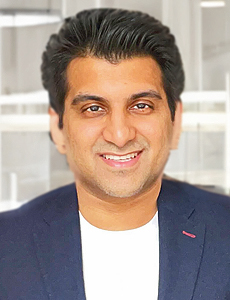
Rohan Malhotra, CEO and cofounder, Roadzen
“Now, 80% of all vehicles that are produced have inbuilt telematics capabilities,” said Malhotra. “It’s growing very quickly at the moment, but new vehicles only make up about 7 or 8% of the car park.”
A newer solution is phone-based apps. While these can’t typically access vehicle information directly, they are able to monitor behaviors like hard braking, hard turns and distracted driving.
“This is growing very, very quickly, because the friction of installation is way lower than actually putting hardware inside the vehicle,” Malhotra said.
But the tech with the greatest potential to reduce fleet exposure, Malhotra said, is video telematics: “This is a dashcam or embedded camera inside the vehicle. It can be a single-sided dashcam looking at the road or looking at the driver, or a dual-sided dashcam that’s looking at both the road and the driver. This is the most powerful form of telematics that exists because you get a lot of context: How are other people on the road driving? Are you driving within regulation?”
The catch: Typically, “the driver does not want to be tracked at all times,” Malhotra said. The solution: “The way to pitch this is not as a surveillance tool but as a companion on the road, helping them prevent accidents, coaching them to be better — a driver’s buddy.”
In fact, the concept of long-term coaching offers enormous potential to improve professional driving and avoid, if not all collisions, then at least the ones most likely to go nuclear.
“This isn’t about penalizing drivers. It’s about rewarding positive driving behavior,” Stefan said. “It’s developing driver scores so you can reward those drivers. It’s also about identifying deterioration with a driver early on so you can implement corrective action before the driver’s results prevent them from being able to drive on your behalf.”
To make this kind of telematics program work over the long term requires consistency. The investment in the technology is just the beginning; the ongoing investment in its application will pay dividends.
“On the safe driving side, and creating a safety culture within an organization, you’ve got to actually spend time with the data — almost in real time each day — in order to capture things that are happening with drivers and correct them,” Jungeberg said. “It’s a big lift. It’s extra work for somebody to do — your driver manager, your fleet manager, whoever. But generally, if you’re doing it in real time and the feedback gets out there in the driver population (as it typically does within a company), then everybody’s paying far more attention to it all the time.”
Gamification is one method of getting drivers on-side; by using clean driving metrics as the basis for incentives, employees can see how pointers on their driving habits benefit them directly.
This ultimately comes down to company culture, Jungeberg added: “Firms that have very good experience with losses and claims typically have that safety culture, that team built. The ones that struggle with their losses and claims are ones that don’t have any culture at all.”
The Look of Success
The goal of all these improvements is, of course, to reduce the number of accidents and resulting claims. But a certain element of risk is inevitable, and as mentioned, juries may expect insurers to compensate the injured even in cases where liability is in doubt.
In these cases, telematics can, at the very least, demonstrate to a jury that a fleet operator was making a good-faith effort to maximize their drivers’ road safety and avoid reasonable accusations of negligence.
Data backs this up. A 2023 study from the American Transportation Research Institute indicated that dashcams, especially road-facing cameras, exonerate commercial truckers more often than the reverse: In cases where road-facing camera data is submitted, the driver of a commercial motor vehicle is exonerated roughly 63% of the time and found at fault roughly 36% of the time.
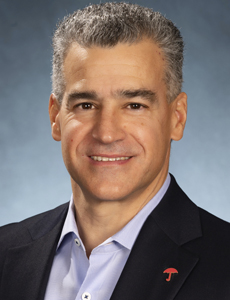
Donato Monaco, president, Northland Insurance
“There has been some concern that cameras might be more damning in accidents,” Monaco acknowledged. “However, we’ve found the opposite to be true. Video footage has more often than not helped defend drivers. Video can be sent to drivers at a collision site to help inform first responders as to what happened and show fleet drivers might not be at fault. And, in cases where they are at fault, it can actually help expedite the claims process, which can end up lowering the cost of claims that would have been paid out anyway.”
So while telematics is proving to be a powerful weapon in the fight against legal system abuse, it remains a double-edged sword, a benefit primarily to those fleet owners who truly make the effort to minimize risky behaviors.
“My caution to our clients is that telematics are great — driver coaching is great — but if you’re not consistently, proactively doing it and making some really hard decisions, such as letting go of drivers who may be great drivers that made one bad mistake, you’re actually helping the plaintiffs’ counsel build the case against you, because all of that can end up being discoverable,” Jungeberg explained.
If a driver is responsible for an accident, however, video evidence confirming that is unlikely to be the deciding factor at trial.
“You’re in a much more positive position as an employer in using cameras and telematics systems and having people to manage it, even if it shows that you were at fault,” Stefan said. “Because instead of drawing a claim out for three and a half years of litigation and multiple levels of attorney fees, you recognize it. You settle it. You correct the situation. You address it, and you move on. That generally ends up being less expensive than if it’s drawn out for two or three years.”
Ideally, telematics data should provide evidence that your drivers are driving well. But if it doesn’t, that’s information you’re better off having — assuming you’re using that data as a training tool and not merely an exculpatory one. You may be found liable for a given accident, but not for a dangerous pattern of willful negligence.
“That becomes extremely meaningful,” Stefan said, “not only to preventing an accident from happening in the first place, but if it does happen, you’re in a much better spot.”
Rolling Out
Given these caveats, there’s a sensible approach to implementing telematics, and it includes laying the groundwork for reduced driver and owner liability before installing dashcams.
“If I’m an employer, I probably don’t want to jump right to camera systems when I haven’t done the proper screening [and] don’t really know who’s behind the wheel,” Stefan said.
“One of the first things an employer can do is improve their screening of drivers through motor vehicle records. If you move towards the use of telematics and camera systems, you need to have the personnel and systems in place to manage the process, or it may backfire on you. An immense amount of data is captured, and if you don’t properly manage it, you may have data that shows a pattern of negligence in reacting to negative data. So start with the basics. What’s the low-hanging fruit? There’s a logical sequence that an employer needs to consider, because if you jump straight into the deep end, it’s probably going to fail unless you’ve got the personnel in place to manage it.”
Jungeberg concurs: “Certainly, there are firms out there that are doing a really good job of it — professionalizing the driver role, holding onto long-term drivers and continuing to put a premium on safety and being claims-free, paying their drivers well and training them and all of those good things. And those are the ones that are succeeding with telematics right now.”

Donnacha Smyth, chief underwriting officer for casualty, AXA XL
For insureds, Smyth said, “showing themselves to be engaged in the training and the technology is important: tracking their incidents, proving that they are actively managing their frequency down and that their training is addressing those behavioral issues. It’s a constant focus on training, but it’s also a constant focus on doing what you say you’re going to do, not just making a statement that ‘Our first priority is safety.’ You’ve got to prove that your first priority is safety.”
And for their part, Smyth added, underwriters should be “partnering with clients and offering some fleet safety training — sharing some of the burden of that cost with our customers and clients, because we have an alignment of interests there. If we can help them improve their drivers and their ultimate underwriting result, that’s going to be good for us too.”
But what about the question still weighing on every fleet owner’s (and their broker’s) mind: When will I see my premiums come down? The answer here, as with the investment in safety itself, is that you can expect to see it pay off over the long term.
“There are immediate gratification solutions in the marketplace from different insurance companies that are trying to use this technology,” Paul said. “But the vast majority of the marketplace is still not doing that. So in order to create an opportunity to lower premiums under a regular guaranteed-cost insurance product, the reduction of losses will be year by year.” &





